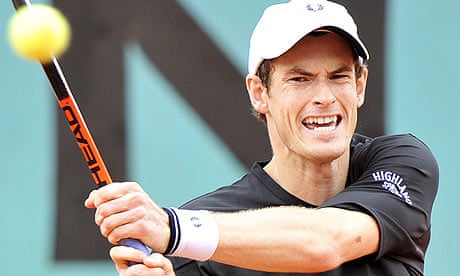Sport England will later this year consider the future funding of grassroots tennis following government warnings that the sport could see a cut if more elite talent does not emerge.
The sports minister, Gerry Sutcliffe, said the Lawn Tennis Association should look to success stories in cycling, rowing and swimming for lessons on how to bring talent through the system. The familiar post mortem on British failings at Wimbledon, with nine of 11 players in the singles draws crashing out in the first round, was given added legs by Sutcliffe's suggestion that the LTA could see its funding cut if matters do not improve.
Sutcliffe said the failure is "embarrassing" but also sought to clarify his remarks, reiterating that tennis is just one of two major sports – along with football – that does not receive lottery funding towards its elite performance. Such is the annual injection of funds from Wimbledon, which makes around £25m, and sponsors that it is the only Olympic sport not to receive money from UK Sport.
But £27m over four years has been promised to the grassroots through Sport England, which views it as a key driver of its target to get one million more people playing sport "regularly" (three or more times a week). The government's promised sporting legacy from the 2012 Olympics, which some senior sporting figures believe has insufficient focus, will be measured according to the target.
Under targets agreed last year, the LTA has to increase the number of people playing tennis regularly by 150,00 by 2013. In total, the quango will distribute £480m over the next four years. Among the targets set for tennis are to increase the number of juniors playing competitively from 22,000 to 39,000 and increase the number of juniors identified as "on track" for the top 100 from 24 to 44. The LTA claims it has already increased the number of juniors competing regularly from 8,000 in 2006 to 25,814.
Following the success of UK Sport's "no compromise" investment policy for elite sport, which resulted in Britain's medal haul in Beijing being the best since 1908, the government has been keen to set a similar tone at Sport England. "We have to be an organisation that genuinely rewards success and knows how to deal with failure," the chief executive Jennie Price said earlier this year. "The funding we put into sport is an investment on which we expect a return. It is not a donation."
Each sport undergoes a quarterly audit, with a reduction in funding seen as an option of last resort if other measures do not help. But with outcomes in grassroots sport not measured in precious metal, results are much harder to define and measure. The LTA argues that its latest strategy, put in place by the former Sport England chief executive Roger Draper when he joined in 2006, needs time to bear fruit.
But Sutcliffe believes the time for excuses is nearing an end. "Why are we not having the production line of players that other countries do," he told the BBC. "We're not succeeding at the elite level and I want to know why."
